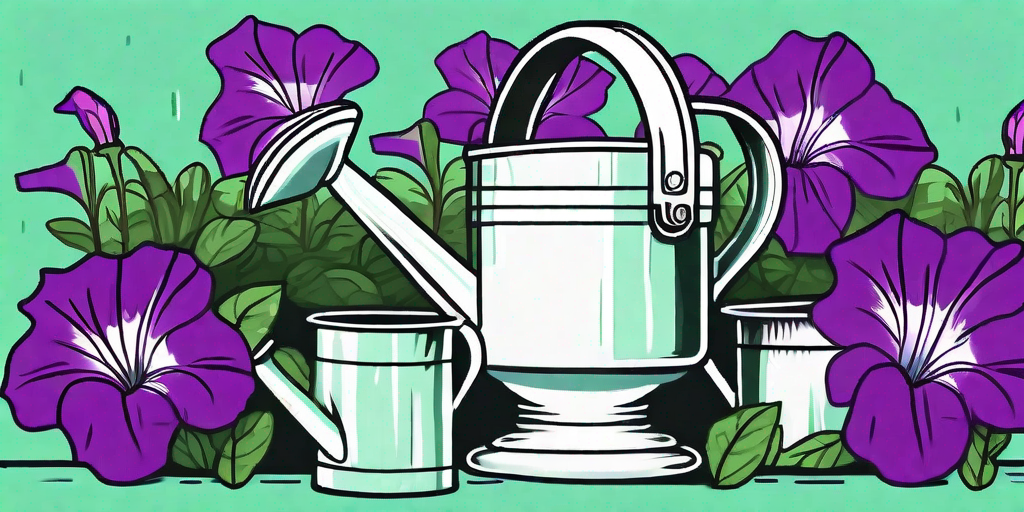
Welcome to the wonderful world of petunias, where the petals are purple, and the care is purrfectly simple! If you're looking to add a splash of vibrant color to your garden, you've come to the right place. Let's dive into the delightful details of growing and caring for these fabulous flowers.
Understanding the Purple Petunia
Before we get our hands dirty, let's take a moment to appreciate the purple petunia. This flower is not just a pretty face. It's a hardy plant that can withstand various weather conditions, making it a favorite among gardeners worldwide. Plus, its vibrant purple color is a sight for sore eyes!
Native to South America, petunias are part of the Solanaceae family, which also includes tomatoes, potatoes, and tobacco. They come in a variety of colors, but today, we're focusing on the purple petunia, a true gem in the garden.
Planting Your Petunias
Now, let's get down to the nitty-gritty: planting your petunias. This process is as easy as pie, but there are a few key steps to follow.
First, choose a spot in your garden that gets at least six hours of sunlight each day. Petunias love the sun, and the more they get, the more they bloom. Next, prepare the soil. Petunias prefer well-drained soil with a slightly acidic pH. A good mix of compost and garden soil should do the trick.
Once your soil is ready, it's time to plant! Dig a hole about twice the size of your petunia's root ball, place the plant in the hole, and cover it with soil. Water thoroughly, and voila! You've planted your first purple petunia.
When to Plant
The best time to plant petunias is in the spring, after the last frost. This gives them plenty of time to establish themselves before the hot summer months.
However, if you live in a warmer climate, you can plant petunias in the fall for a burst of color in your winter garden. Just be sure to protect them from any unexpected frost.
Caring for Your Petunias
Now that your petunias are in the ground, it's time to learn how to care for them. Don't worry, it's not rocket science! With a little love and attention, your petunias will thrive.
First, water your petunias regularly. They like to stay moist, but not too wet. A good rule of thumb is to water them when the top inch of soil feels dry to the touch.
Next, feed your petunias with a balanced fertilizer every two weeks. This will help them produce more blooms and maintain their vibrant color.
Finally, deadhead your petunias regularly. This means removing any faded or dead flowers to encourage new growth. Trust me, your petunias will thank you for it!
Dealing with Pests
Like any plant, petunias can attract pests. Aphids, slugs, and snails are the most common culprits. But don't panic! These pests can be easily controlled with a little bit of insecticidal soap or a homemade solution of water and dish soap.
If you notice any holes in your petunias' leaves, it's likely the work of slugs or snails. These critters can be deterred with a ring of crushed eggshells or diatomaceous earth around your plants.
Frequently Asked Questions
Now, let's tackle some of the most frequently asked questions about purple petunias. Because let's face it, we all have questions, and I'm here to provide the answers!
Why are my petunias not blooming?
If your petunias are not blooming, it could be due to a lack of sunlight, overwatering, or nutrient deficiency. Make sure your petunias are getting at least six hours of sunlight each day, and feed them with a balanced fertilizer every two weeks.
Can I grow petunias from seeds?
Absolutely! Growing petunias from seeds is a fun and rewarding process. Just be sure to start your seeds indoors about 10 to 12 weeks before the last frost.
Are petunias annuals or perennials?
Petunias are typically grown as annuals, meaning they complete their life cycle in one year. However, in warmer climates, they can be grown as perennials, coming back year after year.
Conclusion
And there you have it, folks! Everything you need to know about growing and caring for purple petunias. With a little bit of love and care, these vibrant blooms can add a splash of color to any garden. So, what are you waiting for? Get out there and start planting!
Remember, gardening is not just about the end result. It's about the journey. So, enjoy every moment, from planting your petunias to watching them bloom. Happy gardening!















